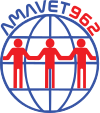Keynote lessons
Gerhard Navratil (Department of Geodesy and Geoinformation, Vienna University of Technology): Smart Cities require 3D Information – A Case for a 3D Cadastre
The concept of “smart city” aims at making cities more efficient, livable, and socially inclusive. This requires a large number of interconnected systems and services with the necessary infrastructure. These systems and services require data to operate. Traditionally, many of these data sources were two-dimensional, e.g., cadastre, building regulations, city maps, etc. However, in the last decades data sets like 3D city models were created. In addition, with an increasing pressure to use space efficiently and a need to locate space for infrastructure, vertical stacking of infrastructure is the logical next step. Many cities started doing this a century ago with the introduction of underground transportation, but in most cases, the documentation failed to communicate the exact spatial extent of infrastructure. An extension of the cadastral concept could help structure the data and provide a solid foundation for all kinds of smart services like.
The talk explores technical possibilities and limitations, conceptual decisions, legal questions, and visions. Public law restrictions are an essential aspect of a 3D cadastre and augmented reality is one promising technology to visualize 3D information and interact with it. Some visions for future cadastral systems will be presented as well.
Blaž Zupan (Univ. Of Ljubljana, Slovenia): Data Science for Everyone!?
Machine learning methods are drivers of change in sciences and engineering. The computational approaches that can sip through vast collections of data, extract interesting patterns, and devise predictive models are becoming omnipresent. Only a few professionals understand the basics of data science, and even fewer engage in building models using their data. In this talk, I will explain how anybody who can spare a few hours can learn the essential mechanics behind data mining so that after a short training the professionals can gain enough intuition about data science to recognize opportunities that this field can offer and actively engage in data science projects. The key ingredient for such training is — besides good mentors and encouraging working environment — the right tool, where workflow-based construction of analytical pipelines with interactive visualizations can be the key to simplicity, explorative data analysis, and flexibility to be able to adopt analytics to any data and problems. I will illustrate the use of such a tool on practical cases that will include image analytics and geodata analysis.








